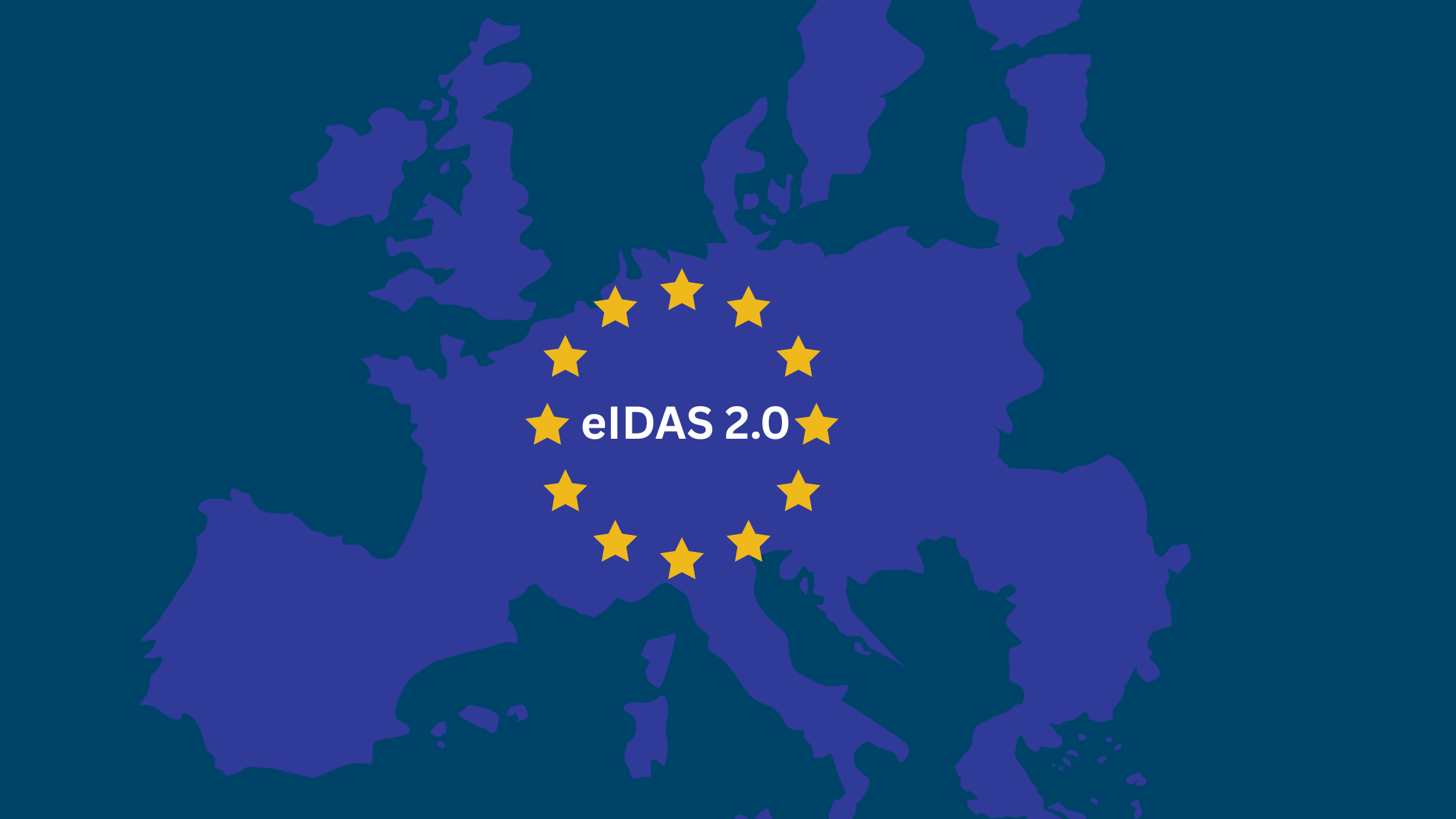How to Build eIDAS-Compliant Barcode Scanning Solution?

Digital transformation has revolutionized how businesses operate across borders, particularly within the European Union.
However, this shift brings significant challenges in verifying identities and ensuring secure electronic transactions.
The eIDAS regulation addresses these challenges by establishing a standardized framework for electronic identification and trust services.
Despite its importance, many organizations struggle with implementation due to technical complexities and evolving requirements.
This article explores what eIDAS is, how organizations can prepare for compliance, and how ScanDoc’s barcode scanning technology plays a crucial role in simplifying implementation through efficient data extraction and solution integration.
What is eIDAS?
The Foundation of Digital Trust in Europe
eIDAS compliance refers to adherence to Regulation (EU) No 910/2014, which came into effect on July 1, 2016. This regulation replaced the earlier eSignature Directive (1999/93/EC) and established a comprehensive framework for electronic identification and trust services across all EU member states.
The eIDAS regulation serves a fundamental purpose: to create a predictable regulatory environment for secure electronic interactions between citizens, businesses, and public authorities.
Establishing mutual recognition of electronic identification means across borders enables seamless digital transactions throughout the European single market.
Key Components of eIDAS
The regulation addresses two primary areas:
- Electronic identification: This component focuses on the system and processes used to verify the identity of individuals or organizations in the digital realm. The regulation defines three assurance levels:
- Low: Basic identity verification with minimal security requirements
- Substantial: More rigorous verification with stronger security controls
- High: The most stringent level requiring sophisticated verification methods
- Trust services: These are electronic services that create, validate, and preserve various forms of electronic transactions. The regulation recognizes five core trust services:
- Electronic signatures: Digital expressions of a person’s agreement to document content
- Electronic seals: Digital equivalents of business stamps that guarantee document origin
- Electronic timestamps: Elements that link documents to specific points in time
- Website authentication: Certificates that verify website trustworthiness
- Electronic registered delivery: Secure channels for document transmission
A qualified trust service provider must undergo rigorous certification and regular audits to achieve and maintain this status. These providers appear on national trusted lists, giving them legal recognition throughout the EU.
The Evolution to eIDAS 2.0
The digital landscape continues to evolve, prompting the European Commission to propose amendments known as eIDAS 2.0. This update introduces the European Digital Identity Wallet, a tool that enables citizens to store and manage their digital identities and official documents securely.
The European Digital Identity Wallet represents a significant advancement in the implementation of electronic identification, enabling citizens to prove their identity and share electronic documents with just a few clicks.
Organizations must prepare for these changes as they will impact how digital identity verification is conducted.
How to Prepare for eIDAS Compliance
Achieving eIDAS compliance requires a systematic approach that addresses both technical and organizational aspects. Here’s a comprehensive guide to preparing your organization:
1. Assess Your Current Digital Identity Infrastructure
Begin by evaluating your existing systems and processes for electronic identification and trust services.
This assessment should:
- Identify which digital transactions require eIDAS compliance
- Evaluate current authentication methods against eIDAS assurance levels
- Review document verification processes for compliance gaps
- Assess cryptographic algorithms and key management practices
Many organizations discover that their existing document verification processes fall short of eIDAS requirements, particularly regarding cross-border recognition and security controls.
2. Determine Required Assurance Levels
Based on your business needs and risk assessment, determine which assurance level is appropriate for different transactions. Consider:
- The sensitivity of the data being processed
- Legal requirements for specific industries (banking, healthcare, etc.)
- Cross-border transaction requirements
- User experience implications
For most business applications involving financial transactions or personal data, the “substantial” level is typically the minimum requirement.
3. Select Appropriate Trust Services
Identify which trust services are necessary for your operations:
- Do you need qualified electronic signatures for legally binding agreements?
- Are electronic seals required for organizational validation?
- Do you need qualified timestamps for time-sensitive transactions?
- Is secure delivery of documents essential to your processes?
Each trust service has specific implementation requirements that must be addressed in your compliance strategy.
4. Implement Secure Digital Identity Solutions
Secure digital identity implementation requires robust technical solutions that:
- Support the required assurance levels
- Implement proper cryptographic controls
- Ensure data protection and privacy
- Enable interoperability with other systems
This often involves integrating specialized tools like barcode solutions that can securely capture and process identity information from official documents.
5. Partner with Qualified Providers
Unless you plan to become a qualified trust service provider yourself, you’ll need to partner with existing qualified providers.
Consider:
- Their certification status and inclusion in trusted lists
- The specific services they offer
- Integration capabilities with your systems
- Support for cross-border operations
6. Prepare for Certification and Audits
If you’re implementing trust services that require qualified status, prepare for the certification process:
- Engage with an accredited Conformity Assessment Body
- Document your security controls and processes
- Implement comprehensive audit logging
- Establish incident response procedures
Regular audits (at least every 24 months) are mandatory for maintaining qualified status.
7. Plan for the European Digital Identity Wallet
As eIDAS 2.0 approaches implementation, organizations should prepare for integration with the European Digital Identity Wallet:
- Monitor regulatory developments and technical specifications
- Plan API integrations for wallet compatibility
- Design user experiences that leverage wallet capabilities
- Consider how your verification processes will adapt to this new paradigm
How ScanDoc Simplifies eIDAS Implementation Through Barcode Technology
ScanDoc’s barcode scanning technology offers a powerful solution for organizations implementing eIDAS-compliant identification processes. By automating data extraction and system integration, ScanDoc addresses key challenges in the compliance journey.
Advanced Barcode Solutions for Secure Document Verification
Modern barcode solutions play a crucial role in secure document verification. ScanDoc’s technology supports multiple barcode formats (QR, Data Matrix, PDF417) commonly used in identity documents across Europe.
This versatility ensures compatibility with various national ID schemes and supports cross-border recognition as required by eIDAS.
Several critical functions:
- Captures barcode data from physical and digital documents
- Verifies the authenticity of the encoded information
- Extracts identity attributes securely
- Processes data according to eIDAS security requirements
This automated approach significantly reduces the risk of manual data entry errors while accelerating verification workflows.
Seamless Integration with Identity Providers and Trust Services
ScanDoc facilitates electronic identification through its advanced integration capabilities.
The system connects with:
- National identity providers across EU member states
- Qualified trust service providers for signature validation
- Authentication systems at various assurance levels
- Existing business applications and workflows
This integration capability is essential for organizations implementing digital identity solutions that must work across multiple systems and platforms.
Supporting eIDAS Assurance Levels
ScanDoc’s architecture supports the implementation of all three eIDAS assurance levels:
- Low: Basic barcode scanning with standard verification
- Substantial: Simplified verification with cryptographic validation
- High: Advanced security controls, including tamper detection
Organizations can configure the system based on their specific compliance requirements, ensuring they meet the necessary standards without implementing excessive controls that might impact user experience.
Automating Data Extraction and Processing
One of ScanDoc’s most valuable features is its ability to extract information from barcodes and inject it directly into applications or systems.
This capability:
- Eliminates manual data entry, reducing errors and processing time
- Ensures consistent data formatting across systems
- Maintains data integrity throughout the process
- Creates audit trails for compliance verification
For example, when scanning an identity document with a barcode, ScanDoc can extract personal information, verify its authenticity, and automatically populate registration forms or authentication solutions—all while maintaining eIDAS compliance.
Preparing for the European Digital Identity Wallet
ScanDoc is designed with future compatibility in mind, particularly regarding the European Digital Identity Wallet.
The system:
- Supports the emerging standards for wallet integration
- Enables QR code scanning for wallet authentication
- Maintains compliance with evolving eIDAS 2.0 requirements
This forward-looking approach helps organizations prepare for the next generation of digital identity verification while addressing current compliance needs.
Benefits of Using ScanDoc for eIDAS Compliance
Implementing ScanDoc for eIDAS compliance offers several significant advantages:
Simplifyed Security and Compliance
- Automated verification reduces the risk of human error in identity verification
- Cryptographic validation ensures document authenticity
- Secure data handling complies with eIDAS security requirements
- Comprehensive audit logging supports compliance verification
Improved Efficiency and User Experience
- Reduces verification time from minutes to seconds
- Eliminates manual data entry and associated errors
- Provides a consistent experience across different document types
- Supports both in-person and remote verification scenarios
Future-Proof Implementation
- Compatibility with evolving eIDAS 2.0 requirements
- Support for the European Digital Identity Wallet
- Adaptability to new barcode formats and standards
- Regular updates to maintain compliance with regulatory changes
Cost-Effective Compliance
- Reduces implementation costs compared to custom-built solutions
- Minimizes ongoing operational expenses through automation
- Lowers the risk of non-compliance penalties
- Provides scalability to handle growing transaction volumes
Conclusion
eIDAS compliance presents both challenges and opportunities for organizations operating in the European digital market.
By establishing a standardized framework for electronic identification and trust services, the regulation enables secure cross-border transactions while protecting consumers and businesses.
Preparing for eIDAS requires a systematic approach that addresses technical, organizational, and legal aspects of digital identity verification.
By implementing appropriate solutions and partnering with qualified providers such as ScanDoc, organizations can achieve compliance while improving their digital processes.
ScanDoc’s barcode scanning technology offers a powerful tool for organizations on this journey, automating document verification and data integration while maintaining compliance with eIDAS requirements.
As the regulatory landscape evolves with eIDAS 2.0 and the European Digital Identity Wallet, ScanDoc’s forward-looking approach ensures that organizations remain compliant while benefiting from the latest advances in digital identity technology.
By investing in the right tools and processes today, organizations can not only achieve eIDAS compliance but also position themselves for success in the increasingly digital European market.





